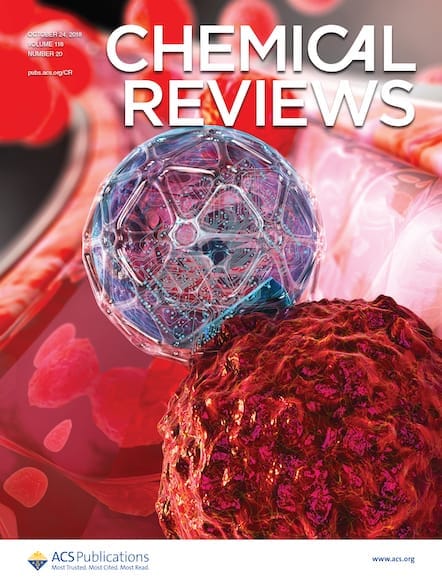Chemical Reviews excited to announce the return of the Your Favorite Review campaign, a celebration of the over 200+ reviews published in 2020 and the amazing authors/teams that wrote them. Here’s how the campaign works: There will be two rounds of voting. In the first round, we will have 24 polls matching the 24 issues […]

Here’s how the campaign works:
There will be two rounds of voting. In the first round, we will have 24 polls matching the 24 issues we published in 2020. You will be able to vote for Your Favorite Review from each of the 24 issues. Following the first round, we will take the winning review from each poll (24 in total) and put them into the final poll, which will help us determine the one review you, our readers, voted as your collective favorite.
Round One
Voting in the first round ended on February 14. Thank you to everyone that voted!
Round Two
Round two ended on February 28, 2021.
Winner and Top 10
Thank you to everyone that took the time to vote in this year’s Your Favorite Review campaign. In total, we received over 10,000 votes between the two rounds, with more than half of them being cast during the Final Round. Wow! On behalf of all of our 2020 authors, your support is appreciated!
Now that we’ve told you how many votes we received, let’s get to naming the winner. Congratulations to authors Michelle P. Browne, Edurne Redondo, and Martin Pumera for “3D Printing for Electrochemical Energy Applications” being named the Favorite Review of 2021. The article provides an overview of the reasoning behind using 3D printing for these applications, discusses how the electrochemical performance of the electrodes/devices are affected by the various 3D-printing technologies, and insights into the future perspectives of the field.
The reviews that finished in the Top 10 (in order):
***
Issue 17:DNA Functional Materials Assembled from Branched DNA: Design, Synthesis, and Applications
Authors: Yuhang Dong, Chi Yao, Yi Zhu, Lu Yang, Dan Luo, and Dayong Yang
***
Authors: Guangbo Qu, Tian Xia, Wenhua Zhou, Xue Zhang, Haiyan Zhang, Ligang Hu, Jianbo Shi, Xue-Feng Yu, and Guibin Jiang
***
Authors: Melike Babucci, Adisak Guntida, and Bruce C. Gates
***
Issue 8:Antifouling Strategies for Selective In Vitro and In Vivo Sensing
Authors: Cheng Jiang, Guixiang Wang, Robert Hein, Nianzu Liu, Xiliang Luo, and Jason J. Davis
***
Authors: Mathilde Luneau, Jin Soo Lim, Dipna A. Patel, E. Charles H. Sykes, Cynthia M. Friend, and Philippe Sautet
***
Issue 15:Nonenzymatic Metabolic Reactions and Life’s Origins
Authors: Kamila B. Muchowska, Sreejith J. Varma, and Joseph Moran
***
Authors: Supriya Rej, Yusuke Ano, and Naoto Chatani
***
Authors: Anastasiya Bavykina, Nikita Kolobov, Il Son Khan, Jeremy A. Bau, Adrian Ramirez, and Jorge Gascon
***
Issue 24:Visible-to-NIR-Light Activated Release: From Small Molecules to Nanomaterials
Authors: Roy Weinstain, Tomáš Slanina, Dnyaneshwar Kand, and Petr Klán
***
Thank you once again to all of the amazing authors who published research in Chemical Reviews in 2020. Lastly, congratulations to Michelle P. Browne, Edurne Redondo, and Martin Pumera and their review. The Your Favorite Review campaign will return in 2022.
Until then, stay abreast of all of the reviews being published in the journal by signing up for Chemical Reviews eAlerts.
